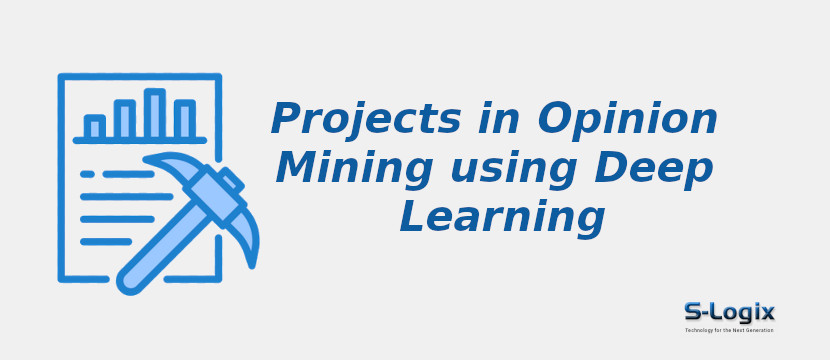Project Background:
Opinion mining using deep learning provides the foundation for understanding the project objectives and their motivations. Opinion mining, often called sentiment analysis, has gained increasing significance in the digital age due to the vast amount of user-generated content on the internet, including product reviews and news articles. This data contains valuable insights into public sentiment and user opinions, which can be pivotal for businesses, governments, and organizations. This typically starts by acknowledging the exponential growth of online content and the challenges of manually extracting opinions and sentiments from this vast corpus of data. This leads to recognizing the need for more sophisticated and adaptable techniques to handle the complexities of opinion mining. Deep learning, with its ability to automatically learn intricate patterns and context from large-scale data, emerged as a game-changer in opinion mining.
Problem Statement
- Opinion mining revolves around effectively and accurately analyzing vast volumes of unstructured text data to discern opinions, sentiments, and emotional tones.
- Traditional methods for sentiment analysis fall short in handling the complexities of human language, including sarcasm, irony, or context-dependent expressions. This problem underscores the need for more advanced, adaptive, and context-aware techniques to analyze opinions accurately.
- The deep learning models automatically learn complex patterns and dependencies in textual data, enabling more precise and contextually relevant opinion mining. Adapting deep learning techniques to the domain of opinion mining introduces challenges such as domain-specific sentiment analysis, multilingual analysis, and emotion detection.
- Additionally, there is a growing demand for real-time opinion tracking and adaptable models that adapt swiftly to evolving language trends and user preferences.
Aim and Objectives
- To leverage deep learning techniques for accurate, context-aware, and scalable Opinion Mining.
- Enhance sentiment analysis accuracy and granularity.
- Enable domain-specific opinion mining.
- Support multilingual and emotional analysis.
- Facilitate real-time opinion tracking.
- Foster user customization and adaptation.
- Ensure model interpretability and transparency.
Contributions to Opinion Mining using Deep Learning
1. Opinion mining using deep learning significantly elevates the accuracy and granularity of sentiment analysis, capturing complex language and resulting in more precise and contextually relevant opinion insights.
2. A domain-specific opinion analysis has become a reality, tailoring models to specialized fields such as healthcare, finance, and legal documents to provide more relevant and actionable insights.
3. The deep learning models have expanded their capabilities to support multilingual sentiment analysis, fostering cross-cultural and international sentiment monitoring, which is crucial for global businesses and organizations.
4. Real-time opinion tracking and adaptive models have become achievable, swiftly adapting to emerging trends and user sentiment shifts in online discussions and social media.
5. Integration and deployment methods facilitate the seamless incorporation of deep learning-based opinion mining into various applications ranging from social media monitoring to customer service and market research.
6. These contributions collectively illustrate the profound impact of deep learning, making it an essential tool for businesses, individuals, and organizations seeking deeper insights into public opinions, customer feedback, and trends in the digital age.
Deep Learning Algorithms for Opinion Mining
- Recurrent Neural Networks (RNNs)
- Convolutional Neural Networks (CNNs)
- Long Short-Term Memory (LSTM)
- Gated Recurrent Unit (GRU)
- Transformer-based Models
- Bidirectional LSTM (BiLSTM)
- Attention Mechanisms
- Self-Attention Models
- Hierarchical Attention Networks
- Memory Networks
Datasets for Opinion Mining
- Twitter Sentiment Analysis Dataset
- SemEval-2017 Twitter Sentiment Analysis Dataset
- Kaggle Sentiment140 Dataset
- Rotten Tomatoes Movie Reviews
- IMDb Movie Reviews
- Amazon Product Reviews
- Yelp Reviews
- Stanford Sentiment Treebank
- Multi-Domain Sentiment Dataset
- Amazon Customer Reviews
- Movie Reviews
- Large Movie Review Dataset
- Stanford Sentiment Treebank - Binary (SST-2)
Performance Metrics
- Accuracy
- Precision
- Recall
- F1-Score
- Mean Absolute Error (MAE)
- Root Mean Squared Error (RMSE)
- Area Under the Receiver Operating Characteristic Curve (AUC-ROC)
- Area Under the Precision-Recall Curve (AUC-PR)
- Cohen Kappa
- Jaccard Index
- Hamming Loss
- Matthews Correlation Coefficient (MCC)
Software Tools and Technologies
Operating System: Ubuntu 18.04 LTS 64bit / Windows 10
Development Tools: Anaconda3, Spyder 5.0, Jupyter Notebook
Language Version: Python 3.9
Python Libraries:
1. Python ML Libraries:
- Scikit-Learn
- Numpy
- Pandas
- Matplotlib
- Seaborn
- Docker
- MLflow
2. Deep Learning Frameworks:
- Keras
- TensorFlow
- PyTorch
